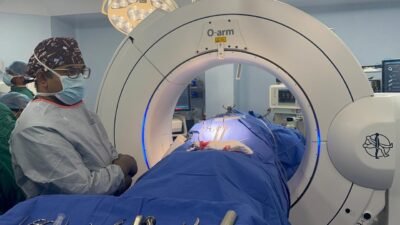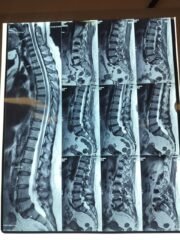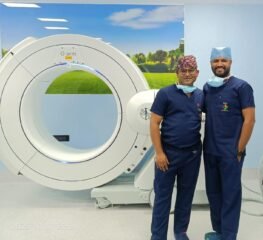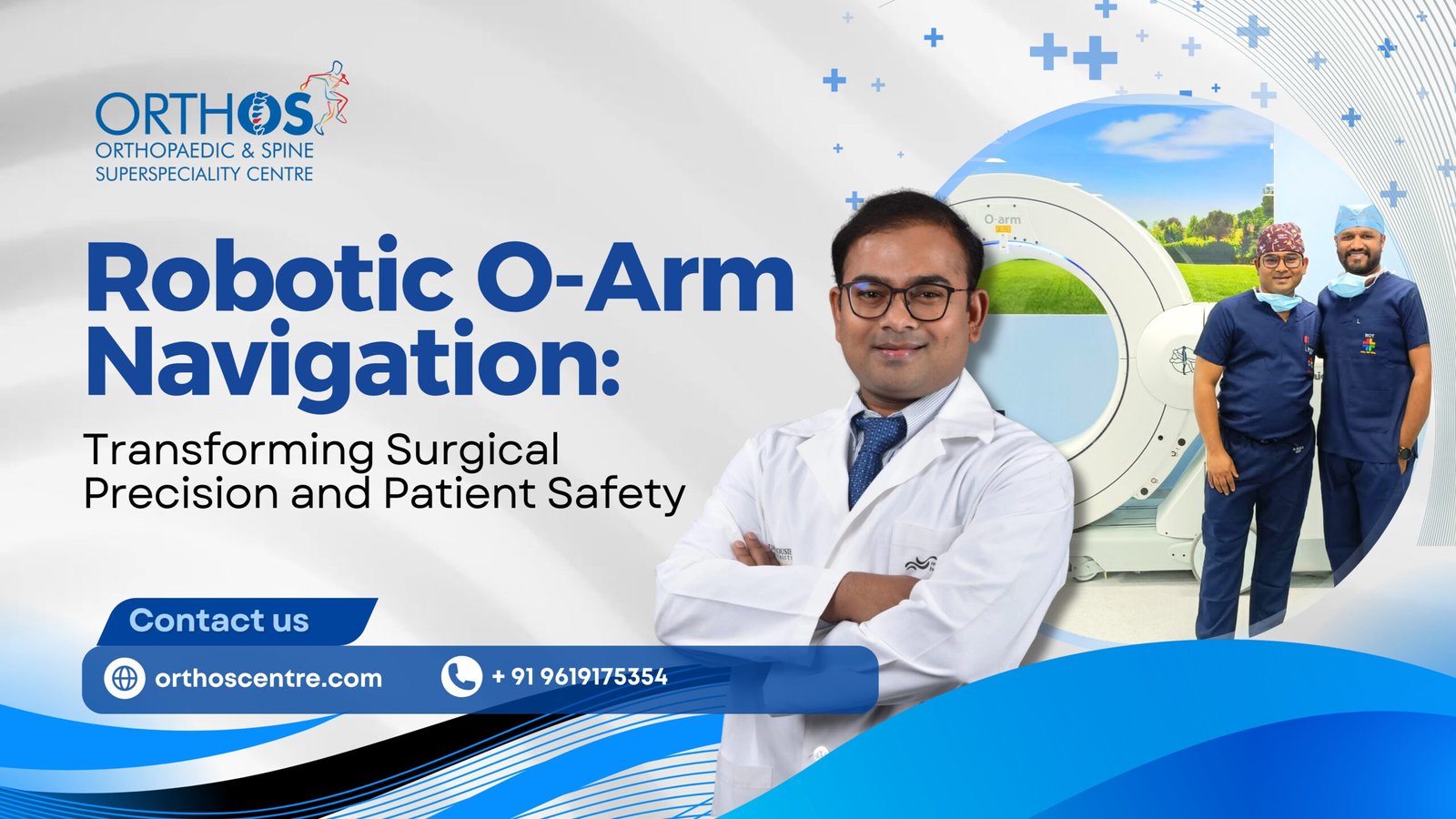Robotic O-Arm Navigation: Transforming Surgical Precision and Patient Safety
Modern medicine is going through an incredible technological transformation, and Robotic O-Arm Navigation in Maharashtra is leading the charge. This cutting-edge system combines robotic-assisted surgery with O-Arm imaging technology, providing an unparalleled level of surgical precision. Dr. Shrikant Dalal, a top expert in advanced surgical robotics, notes that the blend of real-time imaging and robotic accuracy has significantly enhanced patient outcomes while reducing surgical risks. Many of these advanced procedures are now being successfully performed at Ruby Hall Clinic in Pune, a leading center for innovative surgery in Ruby Hall Clinic in Maharashtra
Understanding Robotic O-Arm Navigation
Add Your HeUnderstanding Robotic O-Arm Navigation in Pune is all about blending robotic accuracy with 3D imaging to enhance surgical procedures. The O-Arm technology provides real-time, high-resolution 3D scans of a patient’s anatomy, which helps guide the robotic system. This allows surgeons to operate with incredible precision, down to the millimeter. Dr. Shrikant Dalal highlights that this innovative system gives surgeons a comprehensive view of anatomical structures from multiple angles, both before and during the surgery. This ensures that every step of the procedure is as accurate as possible. By merging robotics with advanced imaging, we see fewer mistakes, smaller incisions, and faster recovery times ultimately benefiting both the surgeon and the patient. These advanced surgeries are routinely carried out at Ruby Hall Clinic in India, offering patients world-class healthcare.ading Text Here
How Robotic O-Arm Navigation Works
Preoperative Planning:
Before any surgery takes place, detailed 3D scans play a crucial role in mapping out the surgical route, ensuring that the plan is customized to fit the patient’s unique anatomy.
Real-Time Imaging:
During the surgery, the O-Arm imaging technology in India offers real-time visuals, continuously updating the surgical navigation system as the procedure unfolds.
Robotic Precision:
The robotic arm, guided by cutting-edge navigation, performs precise movements minimizing damage to surrounding tissues and enhancing the overall outcome of the surgery

Continuous Feedback:
Dr. Shrikant Dalal emphasizes that the system offers ongoing feedback to the surgeon, which boosts decision-making and guarantees the highest safety standards.By using this coordinated approach, Robotic O-Arm Navigation significantly reduces the uncertainty that often comes with complex procedures like spine and neurosurgery, a capability increasingly available at Ruby Hall Clinic in Pune.
Key Benefits of Robotic O-Arm Navigation
The way robotics and imaging have come together is truly changing the game in surgery. Here are some of the standout benefits:
● Exceptional Accuracy: Thanks to the surgical navigation system, implants, screws, and instruments can be placed with pinpoint precision, which really cuts down on the chances of human error.
● Minimized Radiation Exposure: With real-time 3D visualization, there's a lot less need for multiple X-rays during procedures, which is a win for both patients and medical staff in terms of safety
● Less Invasive Procedures: Smaller incisions mean less blood loss, shorter hospital stays, and faster recovery times for patients.
● Enhanced Patient Safety: Continuous image guidance and robotic control significantly lower the risk of complications during surgery

Consistent Results:
As Dr. Shrikant Dalal points out, using Robotic O-Arm Navigation in India including at Ruby Hall Clinic in Maharashtra, has resulted in reliable and reproducible surgical outcomes across a variety of procedures.
Applications in Modern Medicine
Robotic O-Arm Navigation has truly become a game-changer in various surgical specialties:
Spinal Surgery:
It allows for precise screw placement and spinal realignment during minimally
invasive procedures, making a significant difference.
Neurosurgery:
Surgeons can now navigate the intricate structures of the brain and skull with
enhanced control and clarity, which is crucial for successful outcomes.
Orthopedic Surgery:
With improved alignment during joint replacement surgeries, patients experience
better mobility and a quicker recovery.
Dr. Shrikant Dalal highlights that these advancements showcase how technology is
transforming the benchmarks of surgical safety and efficiency on a global scale.
Why Surgeons Trust Robotic O-Arm Navigation
The success of Robotic O-Arm Navigation in India really shines in how it connects human skill with robotic precision. For surgeons, it offers better visualization, boosts their confidence with every move, and gives them a clearer picture of the surgical area. Dr. Shrikant Dalal points out that this technology not only amplifies a surgeon’s abilities but also helps lessen mental fatigue during those lengthy procedures. It transforms complicated, high-stakes surgeries into more manageable and predictable tasks ultimately benefiting both the surgeon and the patient.
Future of Robotic O-Arm Navigation
As we push the boundaries of innovation, Robotic O-Arm Navigation is taking some exciting leaps forward. With the integration of artificial intelligence (AI) and machine learning, we can expect to see enhanced predictive capabilities that will help surgeons spot potential complications before they even arise. Dr. Shrikant Dalal envisions a future where the next generation of robotic systems will be more autonomous, intuitive, and accessible, ultimately making advanced surgical care available to a broader array of hospitals and patients, including those seeking care at Ruby Hall Clinic in Maharashtra

Frequently Asked Questions (FAQs)
Robotic O-Arm Navigation is used in spine, orthopedic, and neurosurgical
procedures to guide instruments with 3D accuracy and improve surgical safety.
The O-Arm captures real-time 3D images of the body, which guide the robot and
surgeon during surgery for enhanced precision.
Yes, it’s considered one of the safest surgical technologies. Experts like Dr.
Shrikant Dalal highlight its ability to reduce risks, radiation exposure, and recovery
time.
Patients experience smaller incisions, minimal pain, reduced blood loss, and quicker
rehabilitation thanks to the accuracy of Robotic O-Arm Navigation in Maharashtra
Trained specialists such as Dr. Shrikant Dalal experienced in robotic and minimally
invasive surgery use this technology to deliver precise and safe surgical outcomes
Most patients qualify, but a consultation with an expert like Dr. Shrikant Dalal helps
determine the best approach for individual cases.
Conclusion
In the world of modern surgery, Robotic O-Arm Navigation in Pune is not just a tool it’s a transformative leap forward. By merging robotic-assisted surgery with advanced O-Arm imaging technology, this innovation ensures unparalleled surgical precision, minimal invasiveness, and faster recovery
Looking for the Best Robotic O-Arm Navigation Expert?
Experience precision-driven care with Dr. Shrikant Dalal , a trusted specialist in Robotic O-Arm Navigation in Pune and minimally invasive surgery. Discover how advanced robotic guidance and real-time imaging can make your treatment safer, faster, and more effective.


